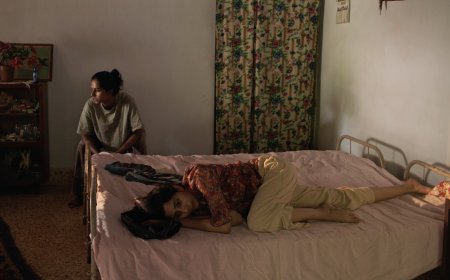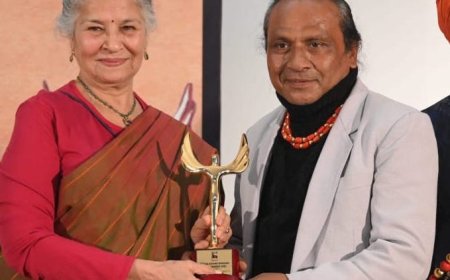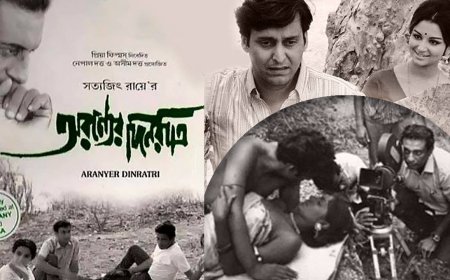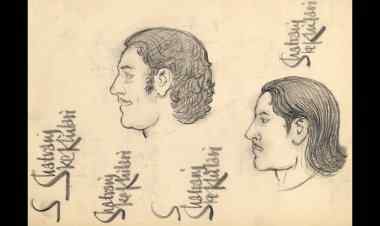THE GHOSTS OF BOLLYWOOD CINEMA
An insightful article by Dr. Shoma A. Chatterji on THE GHOSTS OF BOLLYWOOD CINEMA
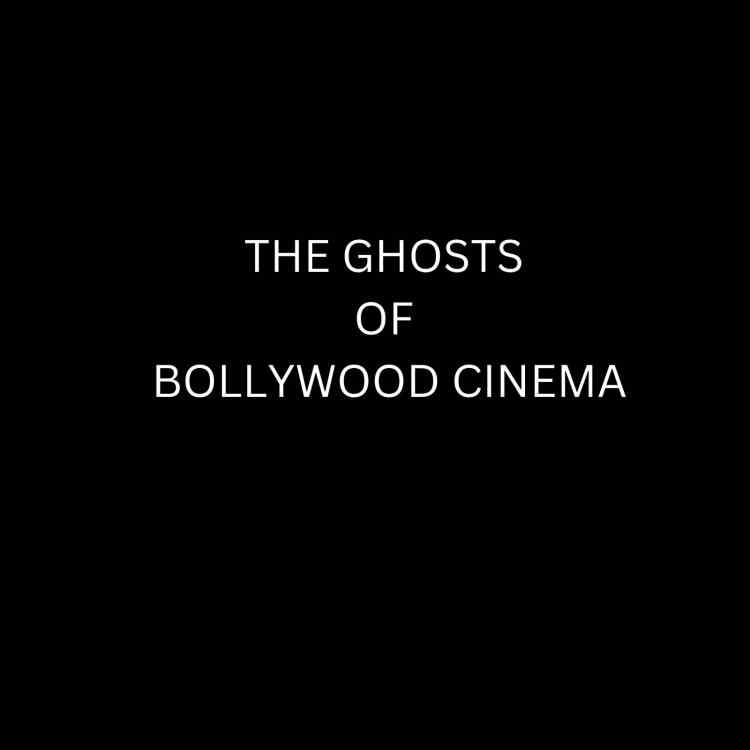
Celebrated a night before Kali Pujo, Bhoot Chaturdashi is all about warding off the evil spirits. It doesn't quite include going trick-o-treating for candies, but it does include eating 14 kinds of leafy greens, and instead of Jack-o-lanterns, we light 14 lamps. It coincides almost closely with the Western Halloween the night which sees ghosts walking in at midnight.
These 14 lamps are set around the house, especially in the dark corners, to chase the (if you believe) dark spirits away. Many also believe that the number of lamps represent the 14 forefathers. Both Halloween and Bhoot Chaturdashi include the healthy custom of using vegetables in the day's rituals and then consuming them at a day-end fest. For example: again, Jack-o-lanterns come with an assortment of pumpkins dishes, while Bhoot Chaturdashi has the 14 sorts of leafy greens.
But this is not about Bhoot Chaturdashi. This is an exploration of ghost films made in Bollywood down the years apt to be placed on the night before Kali Pooja among Bengalies. The problem with the ghost genre of films in Indian cinema is that directors and scriptwriters work on the conviction that the ghost-film genre is a branch of the horror genre and/or the crime or thriller genre, thus making a hotch-potch of the three genres ending in zero, leaving the audience to wonder what hit them.
The ghost, in films and in real life, is a charismatic enigma for all of us. The very intrigue it raises in our mindsets, making us vacillate between belief and disbelief, between the reality of science and the unsubstantiated illusion fairy tales are made of, makes the ghost a very attractive proposition for the mainstream filmmaker. However, it needs a lot of talent, imagination and technical skill to create a very good ‘ghost’ film. It calls for a rare skill that may elude even the best of filmmakers who try their hands at it and fail miserably.
Kamal Amrohi’s Mahal (1949) categorized in the horror genre is really an enchanting love story where the ‘ghost’ in the film, played with just the right dose of mystique by the beautiful Madhubala, was not a ghost at all but pretended to be one when she suddenly found the man in a painting she had fallen in love with, suddenly appear in flesh and blood. This concept is married to the rebirth theory. Brilliant Black-and-White cinematography blended with one of the most captivating musical scores by Khemchand Prakash makes Mahal a milestone in Hindi cinema, ghost or no ghost. Mahal was produced by Savak Vacha and Ashok Kumar under the banner of Bombay Talkies. It was listed in British Film Institute's list of "10 great romantic horror films" and was a box office hit which marked the overnight stardom of Madhubala who played the “ghost” and Lata Mangeshkar who lent her voice to the beautiful songs. Tedhnically speaking, to date, Mahal remains the best-made ghost film this writer ever saw, especially because there was no ghost but only a story of love fulfilled in reincarnation which remains as much an intriguing subject as ghosts. The sound track apart from the music, with the large clock chiming on the dot of two in the night, the rains and thunder lashing at the large glass windows, enriched the tapestry of intrigue further enhanced by the brilliant cinematography achieved with the imaginative use of light and shadow, plus the aura of mystery surrounding the character of Kamini hs turned the film into a classic of all times.
Many years later, the theme of a woman pretending to be a ghost in a suspense thriller was encored in Hemant Kumar’s blockbuster Bees Saal Baad (1962). This film had Waheeda Rehman and Biswajeet as the romantic lead with beautiful songs and music by Hemant Kumar and Manmohan Krishna played the villain.
The next best ‘ghost’ film is Bimal Roy’s Madhumati (1958) the biggest money-spinner among ghost films in Indian cinema starring Vyjayantimala and Dilip Kumar as ill-starred lovers who unite only in their next birth. This is the only ghost film to have won Filmfare awards in several categories and was the biggest commercially successful film from the Bimal Roy stable. The film was set against the backdrop of a hilly mountainscape with an ancestral, forgotten mansion providing the right complement. The music by Salil Choudhury remains one of its strongest attractions added to by the wonderfully subdued acting by Dilip Kumar and his gypsy beauty of the mountains he falls in love with portrayed by Vyjayantimala. It is said to have been inspired by Mahal but it added a terrible villain in the shape of Pran who forced Madhumati to commit suicide to save herself from being raped.
In the beginning, ghost films manipulated a varied array of technical gizmos such as smoke machines, sudden fade-outs and superimpositions, female ghosts stereotypically attired in gossamer white saris with a signature song custom-designed to mark their presence in the film. Female characters monopolized the celluloid ghost for a long time. Bizarre sound effects ranging from jingling anklets to creaking doors, banging window-panes, shattering of glass, an ancestral home with cobweb-covered walls, massive chandeliers, oil portraits of a decaying aristocracy, sudden gusts of wind, torrential rains, a thick forest mushrooming from nothing were the other mandatory devices called for in a ghost film.
Vivek Sharma’s Bhootnath is no different. “I believe in angels,” he says in a graphic when the film opens, throwing up a completely different perspective of the ghost, Kailash Bhootnath, changing forever the ghost’s attitude, as an ‘outsider’, towards earthy relationships like friendship within and without the framework of the family, and emotions like forgiveness, love, hate, anger and revenge. Black-and-White scores over colour for ghost films because of the varied shades of gray that the cinematographer can play with between the extreme polarities of black and white.
I loved the film Bhootnath Returns (2014) directed by Nitesh Tiwari very much because we find a ghost (Amitabh Bachchan) beckoned to earth to solve the problems of the weak, the oppressed, the marginal people of a slum by contesting in the local elections! It is a wonderful blend of a ghost film married to satire, humour and a lot of fun inspite of having a Marxist perspective on things. The film was a sequel to 2008 film Bhootnath, and revolves around Bhootnath who is mocked in a Bhoothworld for his inability to scare children before being sent back to Earth to redeem himself. He makes friends with a street boy Akhrot who is the only living person who can see him. It was quite hilarious at places though. The story goes that the Election Commission of India demanded tax-free status for Bhoothnath Returns, stating, "The state governments should support the strong social message that emanates from the film. Granting tax-free status to this film would make people aware about their rights as voters like making voter ID cards or not treating polling day as holiday". The Uttar Pradesh Government declared tax-free status to film on 30 April 2014.
The dividing line between the horror genre and the ghost genre, the suspense genre and the ghost genre appear to be rather thin. In reality, this may not always be true. A suspense film often makes use of the ‘ghost’ to evoke fear and mystery but it is not a horror film. Films like Ram Gopal Varma’s Bhoot (2003), Darna Mana Hai and Darna Zaroori Hai on the other hand, uses the ghostly storyline to generate horror and generously soaks the narrative with several ghosts.
Amitabh Bachchan has enacted the ghost in several other films before Bhootnath. One of them was in a segment of Darna Zaroori Hai, another was in Hum Kaun Hai, a mangled plagiarization of the Hollywood horror film The Others, and one more was in Rakeysh Om Mehra’s Aks where the ghost of the killer who he was persistently trying to nab possesses him.
All three films bombed at the box office. Lata Mangeshkar’s Lekin directed by Gulzar with a lilting musical score by Hridaynath Mangeshkar starring Dimple Kapadia and Vinod Mehra flopped despite being a lyrical love story seen from the perspective of the man who understands the pain of the ghost. Fashion designer Manish Malhotra’s I See You (2006) lifted from the Hollywood film Just Like Heaven, is about a comatose girl whose spirit visits the hero and they promptly fall in love..
A ghost taking ‘possession’ of a live person is old hat so far as Bollywood films go. Bhool Bhulaiyan is a classic example of the ‘possession’ bit through the character played by Vidya Balan a commercial hit. But Gehrayee (1981) directed by Aruna-Vikas Desai, starring Padmini Kolhapure possessed by the spirit of a woman who died mysteriously, fell flat on its face though it was a well-made film.
Over time, ghost films apart from those coming from the once-famous Ramsay Brothers stable who continued to make horror-ghost films over decades creating world history in cinema of being the only family involved in every stage of film production, have declined in terms of quality, narrative and treatment. In fact, the 1970s and 1980s were dominated by the Ramsay Brothers who brought across quite a few, scary and cheaply made horror-cum-ghost films which became big box office hits to begin with. Among these are Andhera (1975), Aur Kaun (1979), Purani Haveili (1989) and Purana Mandir (1984). In other words, the popularity of their films declined over time because all they are said to have done was to recycle abandoned creepy houses, bring in unknown actresses with voluptuous figures and monster-like gigantic ghosts who did a series of killings till they were “killed” themselves.
In 2017, Shamya Dasgupta wrote a brilliant book on the Ramsay Brothers called Don’t Disturb the Dead – The Story of the Ramsay Brothers published by Harper-Collins which offers a completely different perspective on these brothers and their films.
Films like Ram Gopal Varma’s Bhoot (2003), Darna Mana Hai and Darna Zaroori Hai on the other hand, uses the ghostly storyline to generate horror and generously soaks the narrative with several ghosts. Another film, Hum Kaun Hai,was a mangled plagiarization of the Hollywood horror film The Others, and one more was in Rakeysh Om Mehra’s Aks where the ghost of the killer who he was persistently trying to nab possesses him. All three films bombed at the box office.
Lata Mangeshkar’s Lekin directed by Gulzar with a lilting musical score by Hridaynath Mangeshkar starring Dimple Kapadia and Vinod Mehra flopped despite being a lyrical love story seen from the perspective of the man who understands the pain of the ghost. Fashion designer Manish Malhotra’s I See You (2006) lifted from the Hollywood film Just Like Heaven, is about a comatose girl whose spirit visits the hero and they promptly fall in love. The film could not motivate an ace cinematographer like Ashok Mehta to go beyond the London setting and its colourful cityscape to come to grips with the element of the surreal in the film.
Ram Gopal Verma’s Bhoot, sort of plagiarized from What Lies Beneath, also dealt with a live woman possessed by the spirit of an avenging woman killed by her lover. Rajeev Mehra’s Chamatkar is another film starring Naseeruddin Shah as the ghost who motivates the hero Shahrukh Khan and his daughter Urmila, to avenge his murder, 20 years after his death.
Ram Gopal Verma’s Darling (2007) despite a showstopper with a gorgeous figure like Esha Deol playing an avenging ghost, fell on its face and few even remember the name of the film. RGV made matters worse with his attempt at comedy. But comedy has been used to beautiful effect as a means of wholesome family entertainment in Bhootnath though the exaggerated family melodrama towards the climax undercuts the beauty of the first half.
But these films are far better than the ones that were come across today in films like Stree and Pari and several others serving just to scare and little else in terms of cinema.
***
What's Your Reaction?







